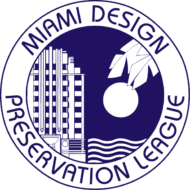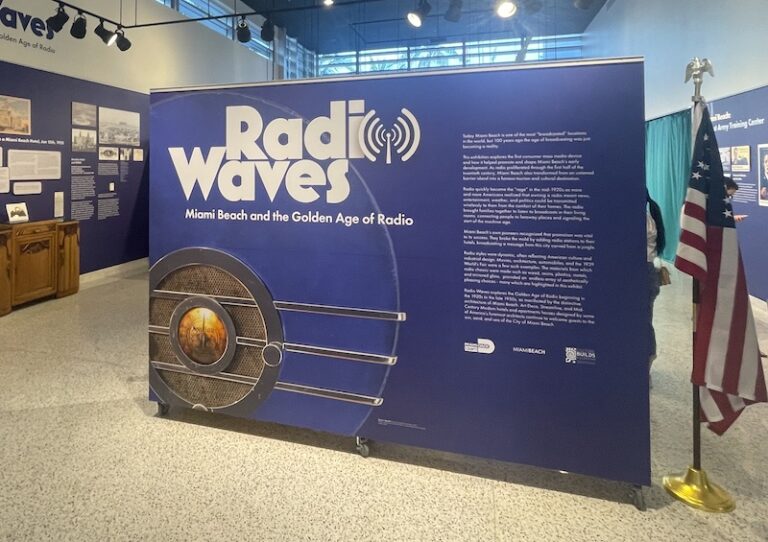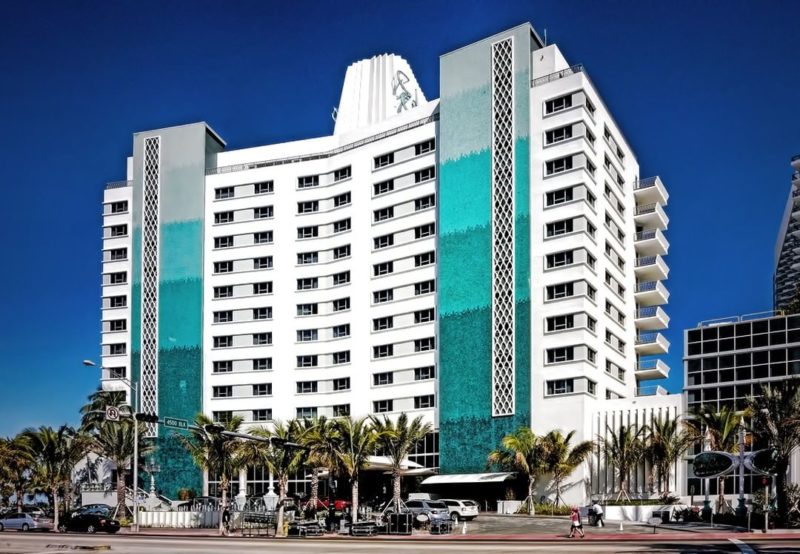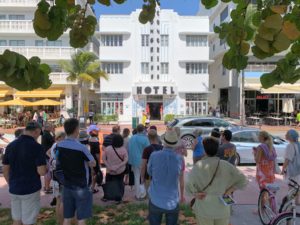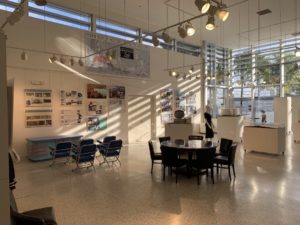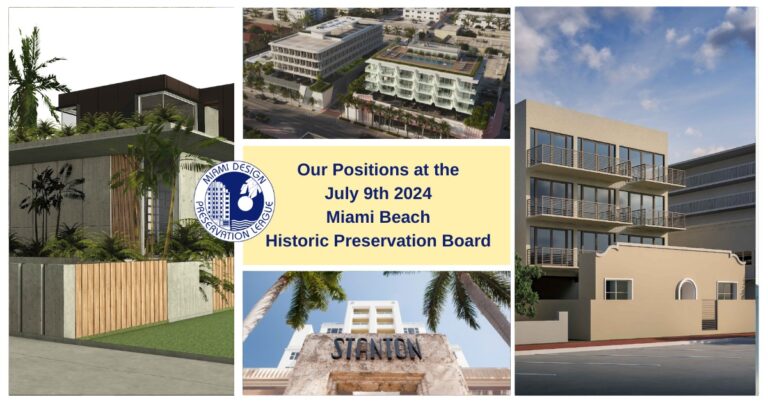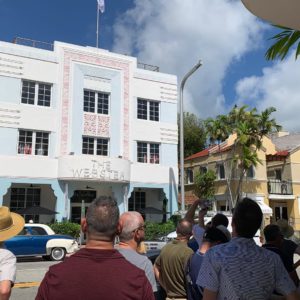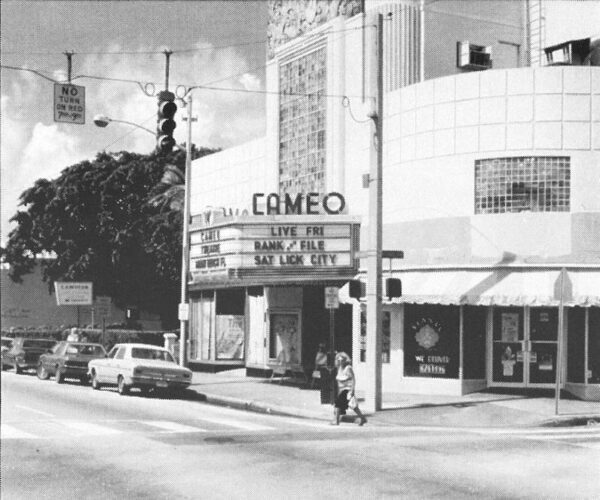
Courtesy of Miami Design Preservation League’s Barbara Baer Capitman Archives
The Cameo Theater at 1445 Washington Avenue opened its doors on November 4th, 1938. It is located in the Española Way Historic District, which in 1986 became the first historic district to ever be designated in Miami Beach. The theater was built in 1938 by New York theater magnate Herman Weingarten, as part of a $1,250,000 chain of 12 theaters in Miami and Miami Beach. Weingarten recognized the immense potential of the blooming area, proclaiming “This section is still in its infancy and I believe it to be the coming section of the country.”
The Art Deco style building was designed by architect Robert E. Collins and had a seating capacity of 1,160 with a balcony, a smoking loge, and an orchestra. It also showcased state-of-the-art sound and projection equipment and air conditioning, making it a highly modern and top quality movie theater. It featured two films on its opening night: “To the Victor” and “The Lie of Nina Petrovna”. Over the coming years, the Cameo would undergo several stages of evolution in its use, adapting with the times to entertain the changing community and always remaining valuable to the city of Miami Beach.
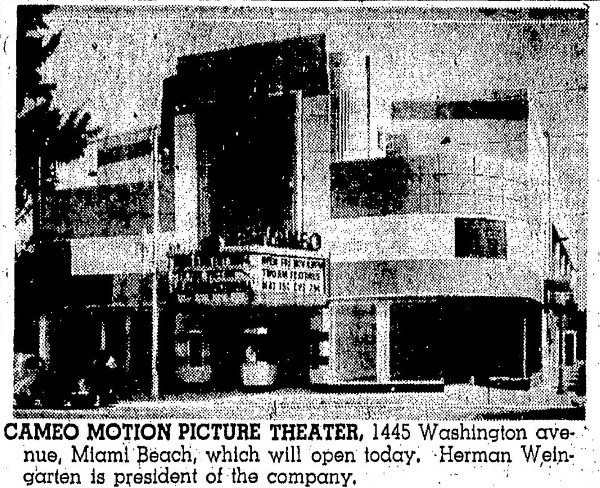
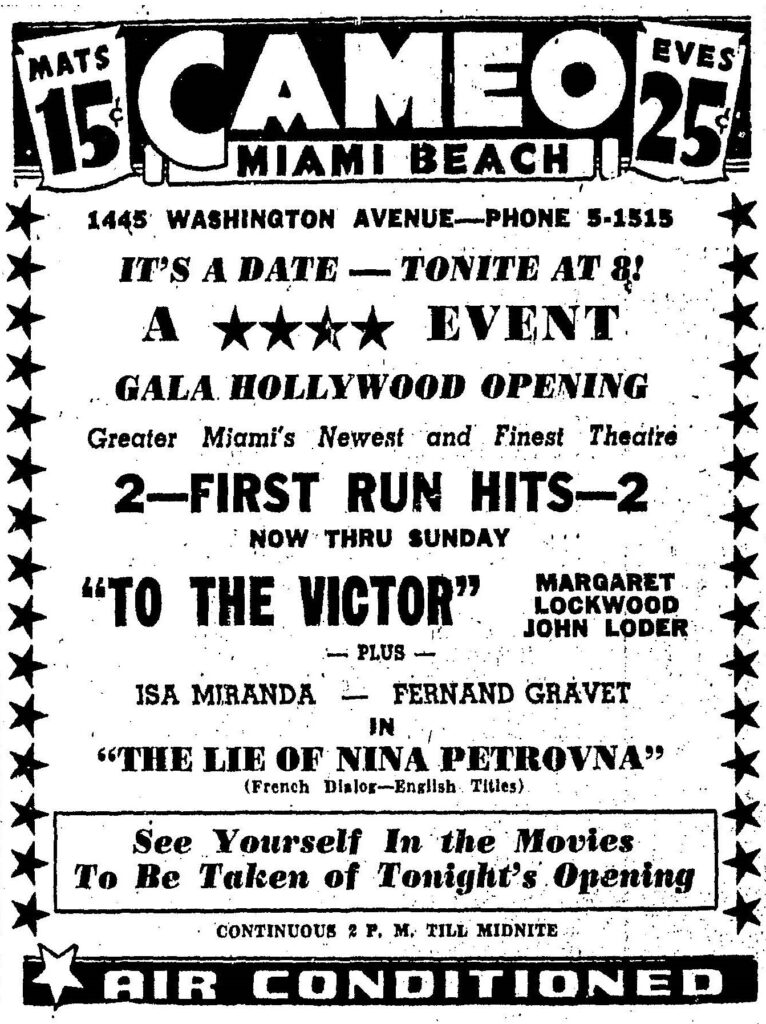
Courtesy of the Miami Herald
In the early 1940s, the Cameo theater would see its first partial evolution now under the ownership of Wometco Theaters. WWII had transformed Miami Beach into an important military hub as many U.S. soldiers were stationed there. During this time, the Cameo was used to provide Sunday morning service for the soldiers who occupied many of the neighboring hotels and apartments. Up to 350 sailors and soldiers would participate in the service each week. A 7 P.M. fellowship hour would also be held with singing and refreshments. After the conclusion of WWII, the theater returned to its regular use as a motion picture theater, but it would now hold new meaning for the local Jewish community. Post-war Miami Beach saw a vast boom in their Jewish population. By the 1960s, the area had become a haven for Holocaust survivors, Jewish veterans who returned after WWII, and older Jewish retirees. This cultural growth was reflected in the Cameo Theater’s inclusion of Yiddish vaudeville shows, as well as their exclusive year-long screening of “The Diary of Anne Frank” in honor of the Jewish community.
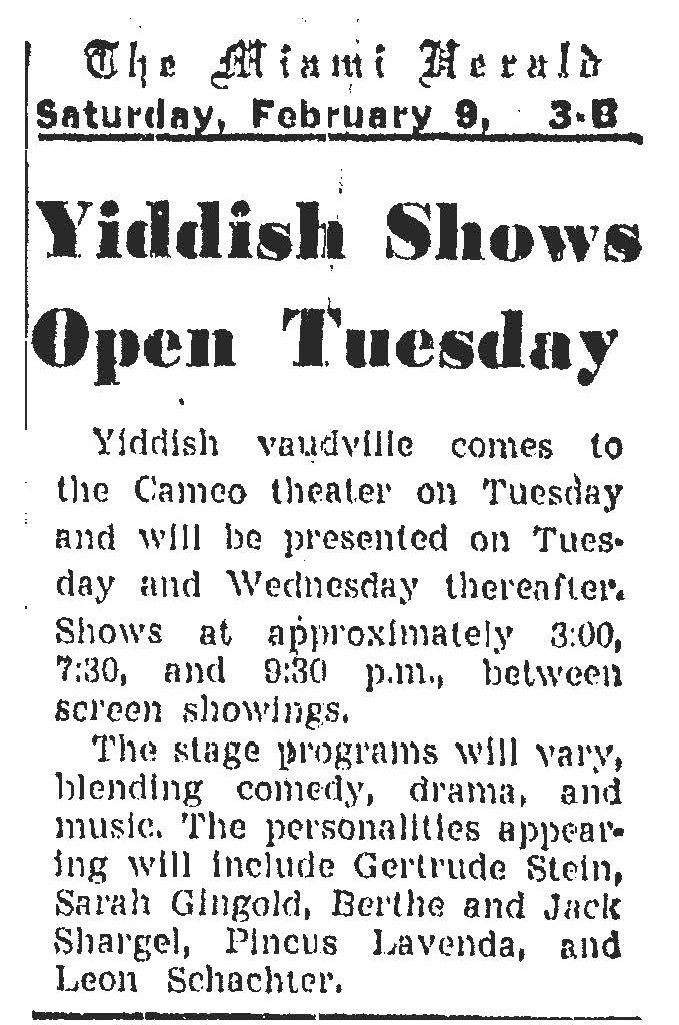
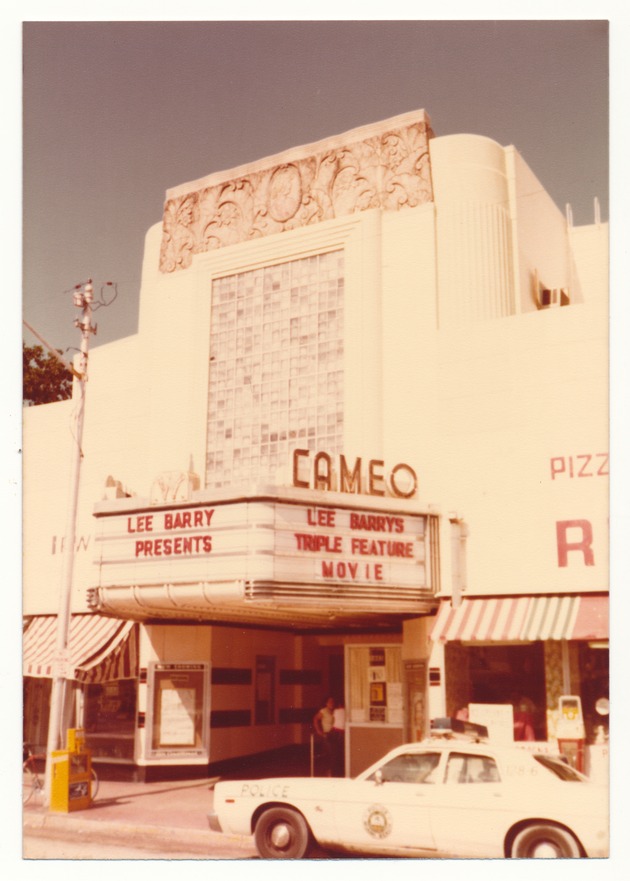
Courtesy of FIU Digital Collections
Although Miami Beach saw a period of great decline throughout the 1970s, it experienced a vibrant resurgence in the 1980s. It would become a newly revamped magnet for tourism, nightlife, and the arts. Once again, the Cameo Theater would adapt to its new environment and reflect the new and improved Art Deco district. It would now become a music venue, catering mainly to rock and punk rock performers. It became known for hosting some of today’s most iconic punk rock bands. The theater would continue to expand the types of music genres that they featured, becoming increasingly popular as a concert venue.
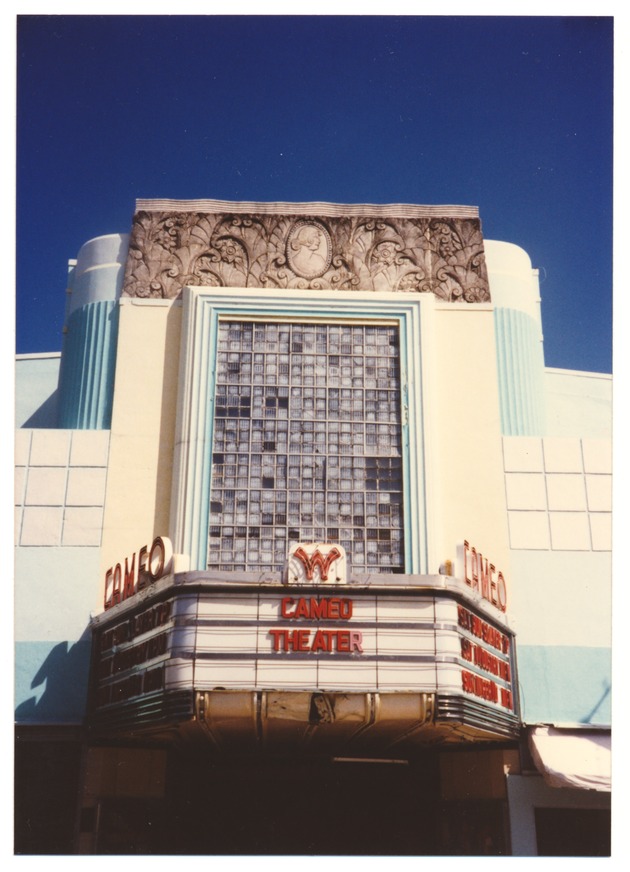
Courtesy of FIU Digital Collections
Beginning in 1987, James Quinlan of the Rhythm Foundation helped spearhead renovation efforts for the Cameo, with the goal of restoring its Art Deco splendor while converting it into a top-notch live performance center. The non-profit Rhythm Foundation was also responsible for the Cameo’s expansion into a broader musical range, as it promoted intercultural connection through live music performances. It introduced concerts by African, Caribbean, and South American artists with emphasis on cultural exchange.
The 1990s was a period of artistic revitalization for the Cameo. It would become a place like none other in Miami Beach where the avant-garde would gather to indulge in a unique experimental art experience sponsored by the Miami Arts Asylum. “The Asylum”, as it was referred to, served as a space where local artists could gather weekly to showcase and experience an eclectic blend of artistic expression which was comprised of Worldbeat music, performance art, painting, photography, sculpture, and film. A 1990 Miami Herald article called the Asylum, “part road show, part party, part cultural event. It’s kind of Bohemian, kind of trendoid, kind of SoBe in-crowd.” Although the Asylum at the Cameo was short-lived, it was instrumental in providing a creative outlet for the growing local artist community in a way that Miami Beach had never before seen.
The Cameo would experience another evolution, shifting itself into a nightclub at the turn of the new century. In 2001, MDPL held a reception at the Cameo for the book launch of “Popcorn Palaces: The Art Deco Movie Theater Paintings of Davis Cone” by Michael Kinerk and Dennis Wilhelm. Throughout the many transformations that the Cameo theater has undergone, it has remained a symbol of iconic Art Deco theater architecture.
